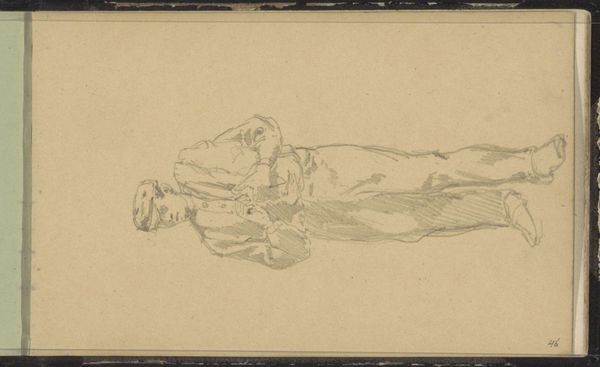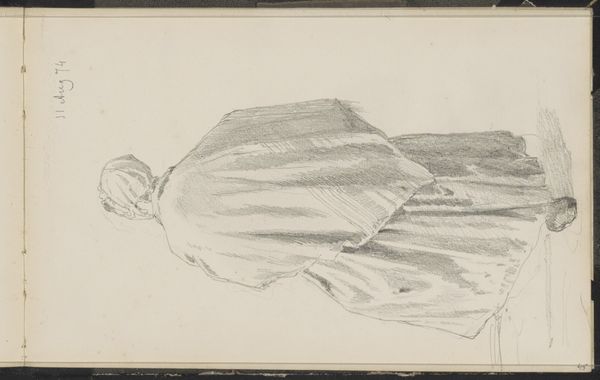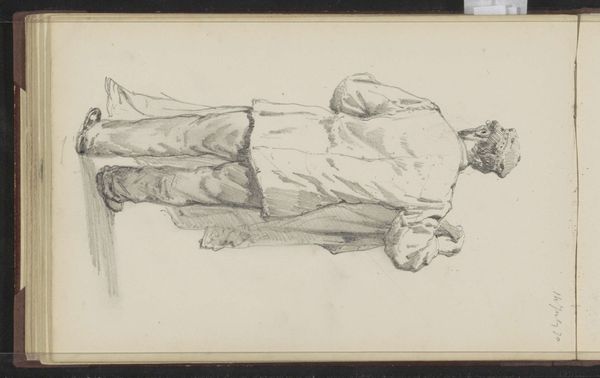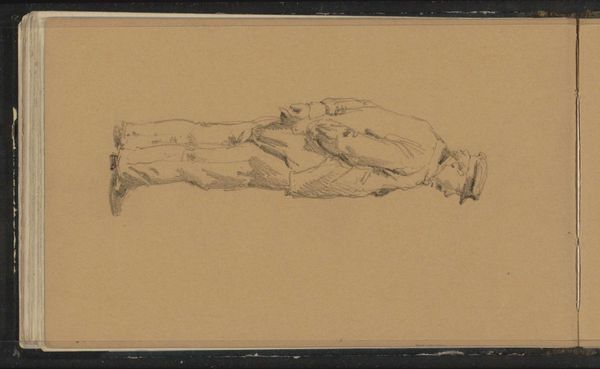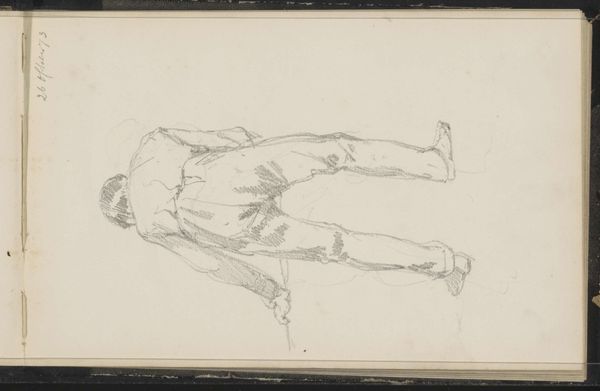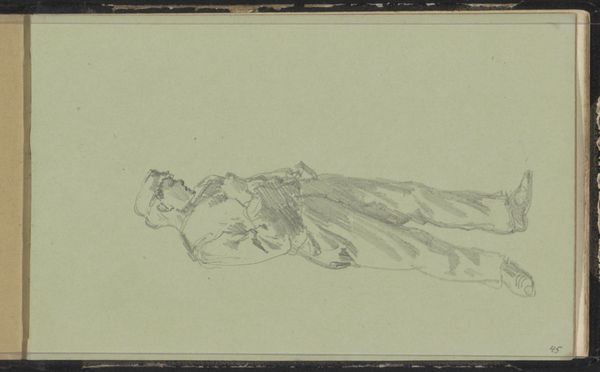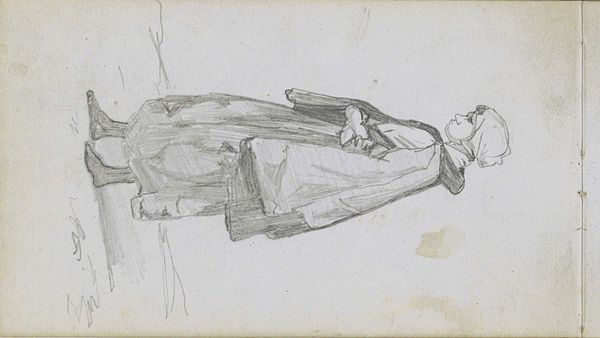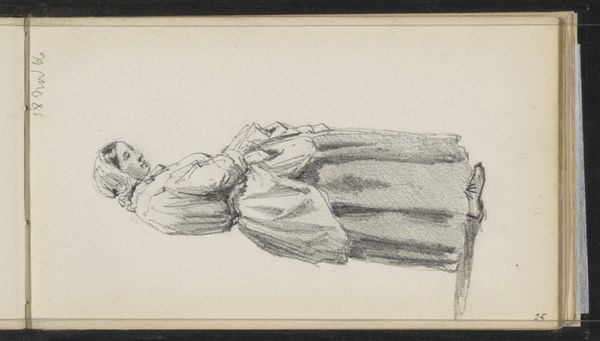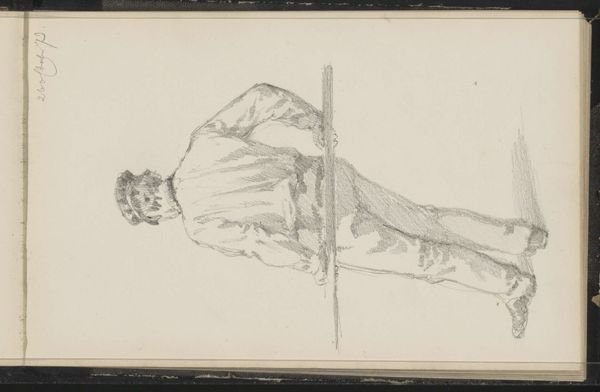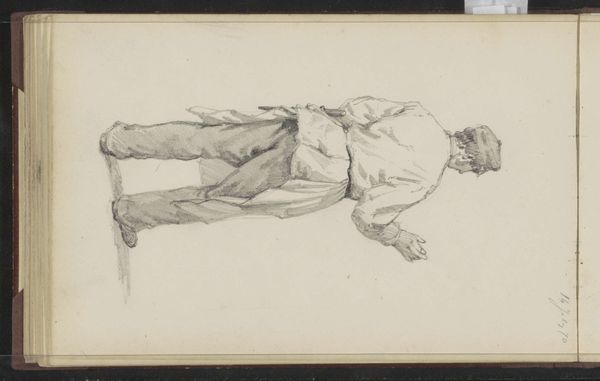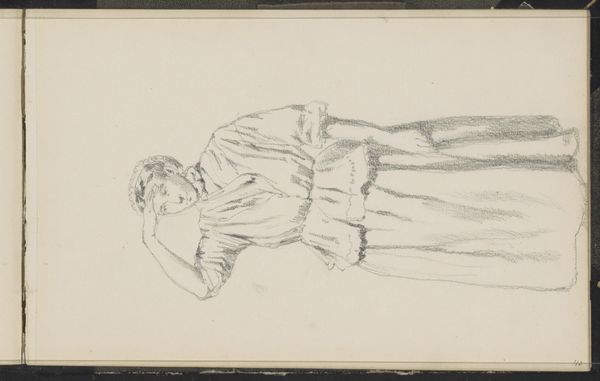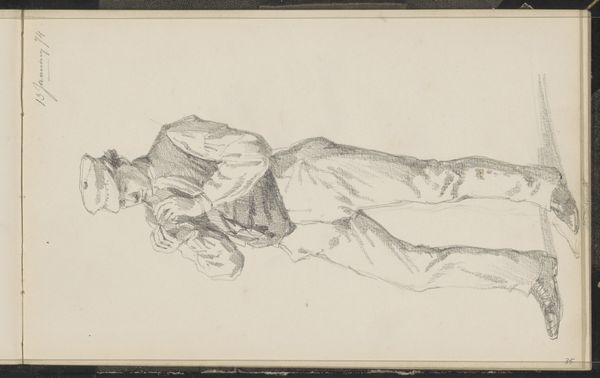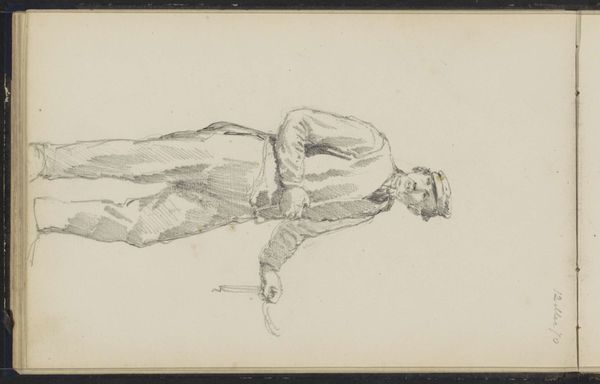
drawing, pencil
#
portrait
#
drawing
#
pen sketch
#
sketch book
#
incomplete sketchy
#
figuration
#
personal sketchbook
#
idea generation sketch
#
sketchwork
#
ink drawing experimentation
#
pen-ink sketch
#
pencil
#
sketchbook drawing
#
genre-painting
#
sketchbook art
#
realism
Copyright: Rijks Museum: Open Domain
Editor: This pen and pencil sketch, "Staande man met pet," or "Standing Man with Cap," by Cornelis Springer, made sometime between 1856 and 1861, feels very intimate, almost like a glimpse into the artist’s personal thoughts. It seems informal and rapidly done, like a candid capture of a man in a moment. How would you interpret this work? Curator: What strikes me is the ordinariness of the subject, which makes it potentially subversive for its time. Instead of glorifying the elite, Springer captures a commoner. Think about the social hierarchy then: was this a commentary on class? Was he intentionally decentering traditional portraiture to acknowledge everyday lives? Consider, too, how accessibility might play a role; working-class representation in art offers an alternative historical narrative that deserves attention. Editor: That's interesting, I hadn’t thought of it that way. I was mostly focusing on the quick, sketch-like quality. Do you think his artistic choices were a political statement, or perhaps more about experimenting with form? Curator: I don't think we can neatly separate the two. Formal experimentation is often intertwined with a shift in social consciousness. Realism itself can be an activist stance. And, if it’s from a personal sketchbook, perhaps we should look into why the artist wanted to immortalize this man's likeness and understand his cultural perspective at the time. Editor: So, even a seemingly simple sketch can be seen as having a deeper connection to social and political issues of its time? Curator: Exactly! And, by extension, this helps us reflect on our own biases and values in how we interpret art and history today. Art can open the doors for uncomfortable conversations about historical realities and injustices. Editor: This has given me a lot to consider about how we see art and its role in reflecting the world around us. Curator: Me too, every piece of art deserves a multi-layered inspection of social issues of its period to spark new interpretations and analyses.
Comments
No comments
Be the first to comment and join the conversation on the ultimate creative platform.
